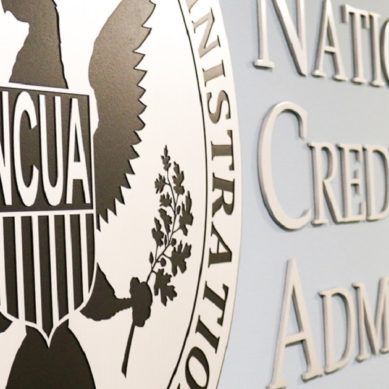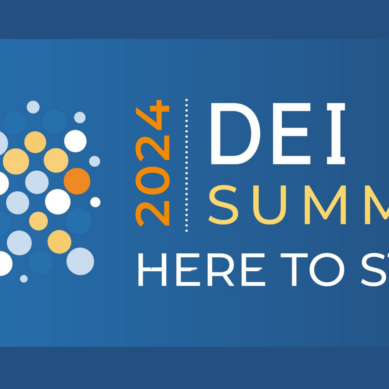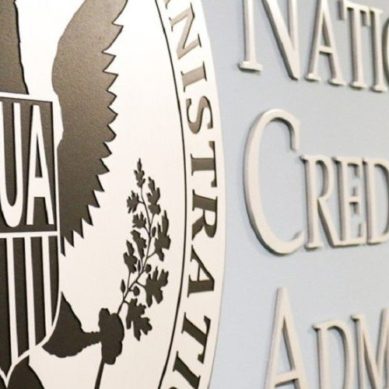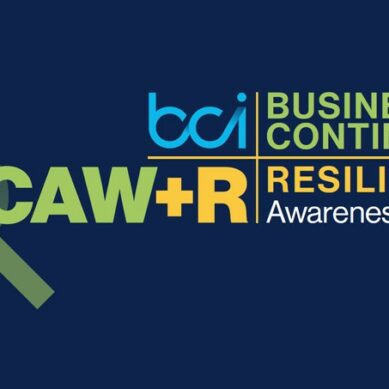Just when you thought you’d heard the last from the 2024 Governmental Affairs Conference, we are back with more! If you were unable to attend the GAC this year or perhaps were overwhelmed with the events of the week and all the information you received, then don’t worry, we are here to provide the highlights.
In this article, we won’t be going over a play-by-play of the week (we covered that pretty thoroughly in our live coverage last week) but instead offering the key takeaways and lessons from the conference that you can bring back to your credit union. From fees, to AI, to the new America’s Credit Unions, this GAC had it all, so let’s get started!
The future of America’s Credit Unions
As we should all know by now, the credit union industry’s two largest advocacy and trade groups, CUNA and NAFCU, have merged to form one entity, America’s Credit Unions. Only recently launched at the start of the year, this GAC marked the first hosted by the organization as well as its first public event. To say it was a big deal would be an understatement.
As such, attendees received information all week long on the priorities, visions, and operations of America’s Credit Unions from the Executive Leadership team, including President and CEO Jim Nussle and Chief Advocacy Officer Carrie Hunt. So what exactly did we learn about the new entity?
To start, every speaker throughout the week stressed that this new group will not simply be a new iteration of the older organizations, but will instead be something new entirely, taking the best parts of both CUNA and NAFCU to form a superior advocacy organization that can speak in one unified voice.
The organization promised to be a vocal, proactive, and reliant partner to credit unions and carry out its mission “to advocate for and advance an environment where credit unions can thrive.” On that topic, they offered their priorities for the year, which will focus on a few of our other takeaways and hot topics from the conference such as fees, third-party vendor authority, and, of course, the dreaded CFPB.
We’ll have more information on America’s Credit Unions coming in the next few weeks, so keep an eye out!
CFPB and CFPB and CFPB, oh my!
Now as I mentioned before, these top five takeaways will all be underlying themes from the week or topics that were mentioned over and over again. But if there was one topic that was brought up so much it threatened to overstay its welcome, it was the Consumer Financial Protection Bureau (CFPB).
Spoiler: credit unions are not fans.
From jokes aimed at the absurdity of the group to claims that it was overreaching in its authority to arguments that it was irrelevant to calls for it to be abolished—all of which were met with cheers and applause—the industry was sure to make its distaste of the CFPB known.
The industry’s main complaints toward the organization stem from its attempt to apply regulations to banks and credit unions equally and without consideration of how the two industries differ in their practices, specifically noting the attempted regulations and restrictions they aimed at credit unions after the bank failures of last spring.
Additionally, the CFPB has been carrying out attacks on supposed “junk fees,” such as overdraft fees, which it claims are often putting consumers in even more financial crisis by taking advantage and capitalizing on their lack of funds. These fees credit unions charge, speakers argued, are not in line with the fees banks charge, which are more predatory. These fees are meant to protect members and they can choose to opt in or out.
Despite the overwhelming support for these sentiments, there were a few who spoke out about the passion with which the industry as a whole seemed to take against measures meant to protect consumers and members, and a few did admit that, overall, credit union income is often overreliant on fee income.
These few dissenting voices did not disagree that the CFPB was out of line, but did encourage credit unions to reexamine their fee structure and study how reliant they are on such fees. A few more argued that justified or not, standing ovations and applause to striking down an organization meant to protect consumers was most likely not the message credit unions want people taking away from the GAC.
“As I depart GAC, I cannot help but think that credit unions are failing to take advantage of the opportunities that the regulatory and economic environment is giving them. Now is the time to differentiate from the banks not to mimic them,” said Caroline Vahrenkamp of the Filene Research Institute on her LinkedIn. “When the big takeaway from the year’s largest industry event is ‘We oppose consumer financial protection,’ that’s a bad look, no matter how reasoned the argument,”
So what’s the overall takeaway here for credit unions? Well, reasoned arguments or not, the CFPB is making strides against fees for banks and credit unions alike. In fact, they recently just released a rule stating that financial institutions with over one million open accounts can charge no more than $8 in credit card late fees. While the fight against the CFPB will continue, now is the time for credit unions to review their fees and determine how reliant they are on said fees.
Innovate excitedly but with caution (and yes, we mean with AI)
If you had AI on your 2024 GAC bingo card, go ahead and mark that square off. Sufficed to say, as AI is most certainly the hot topic of the last year or so, it was almost guaranteed that it would be one of the most talked about subjects at GAC, and it certainly was. From attendees to vendors to NCUA members to keynote speakers alike, the conference was absolutely buzzing with AI talk.
While there were a lot of different viewpoints and strategies regarding AI brought to the table, the overall takeaway was that despite the potential dangers and downsides of using it, AI technology opens up a world of possibilities for credit unions when executed properly, with caution, and with the needed due diligence.
Speakers urged credit unions to continue innovating and looking for ways to incorporate new technologies into their strategy but to bear in mind that AI is new and still has many kinks to be worked out in time. Credit unions should not leap into it, but instead take slow, deliberate, and calculated steps to begin using AI, keeping in mind that when handled poorly, AI can lead to a loss of member trust and potential litigation.
When using AI, draw strict boundaries on when and how the technology will be used. What kind of data and information will it have access to? Keynote speaker Dr. Jennifer Golbeck shared her unsettling encounter with her pharmacy when they had AI use her private medical information in a mass marketing text. She has since lost all trust in the institution. Be careful not to fall into the same pitfalls. Confidential information should never be sent via text or as a marketing ploy. Once member trust is lost, it can be difficult—if not impossible—to get it back.
Additionally, AI can be a powerful tool for financial inclusion (another key takeaway from the week) but in the wrong hands or trained on the wrong data, can also be a weapon working against financial inclusion. While AI may at first appear non-biased, the data it is trained on is often not, which can corrupt the algorithm the AI runs on. Meaning if the data is biased, the AI’s results will be as well.
Finally, the last discussion on the topic of AI revolved around regulation, though no agreement was reached on what the best method would be. Government officials who spoke at the conference seemed more inclined to regulate the use of AI instead of the technology itself while NCUA Vice Chairman Kyle Hauptman seemed to favor a hands-off approach, noting he was against the NCUA standing in the way of credit union innovation and credit unions finding the best way to serve their members’ needs.
Everyone does seem in agreement though that at some point, regulation will come in some form or another. So the key takeaway for your credit union in all this is to go forth: continue innovating with AI, continue learning about AI, and continue adopting AI, but be prepared to explain your methods and keep an eye out for any changes to regulation.
Don’t be everything to everyone
Last, but certainly not least, was the recurring topic of knowing your member base. From speaker to speaker, credit unions were reminded that the most successful way to serve their members and ensure the growth of the credit union is to hone in on knowing their community and the specific needs they have from their financial institution.
Too often, credit unions are focused on trying to be everything to everyone, to be the one-size-fits-all solution. But that rarely works out in the long run. The data, according to the Filene Research Institute, proves that credit unions that pick a target demographic and work on serving them perform better.
Throughout the week, credit union CEOs offered testimony on how their credit unions were thriving and how they did so by committing to serving their communities. In each scenario, the number one element they stressed was to listen to the people in the community and hear their needs then build products and services around those needs.
Hauptman noted that what makes credit unions so unique from other financial institutions is the specific niches they operate within and the communities they dedicate themselves to. From credit unions who speak different languages to those who know the visa policies for each country to those in Maine who operate their schedules around the lobster harvest, finding niches is where credit unions thrive.
The takeaway here? Find your niche and do it better than anyone else.
Learn and execute
Don’t let your GAC experience end when the conference does. Instead, take the lessons and knowledge offered throughout the week back to your credit union and use it to reflect on your strategy.
What needs changing? How will potential fee limits impact your credit union? Are you looking into using AI? And if so, do you have boundaries and guardrails in place?
Hopefully, these takeaways from the 2024 GAC give you some food for thought and a good place to start reexamining your credit union’s goals!























































